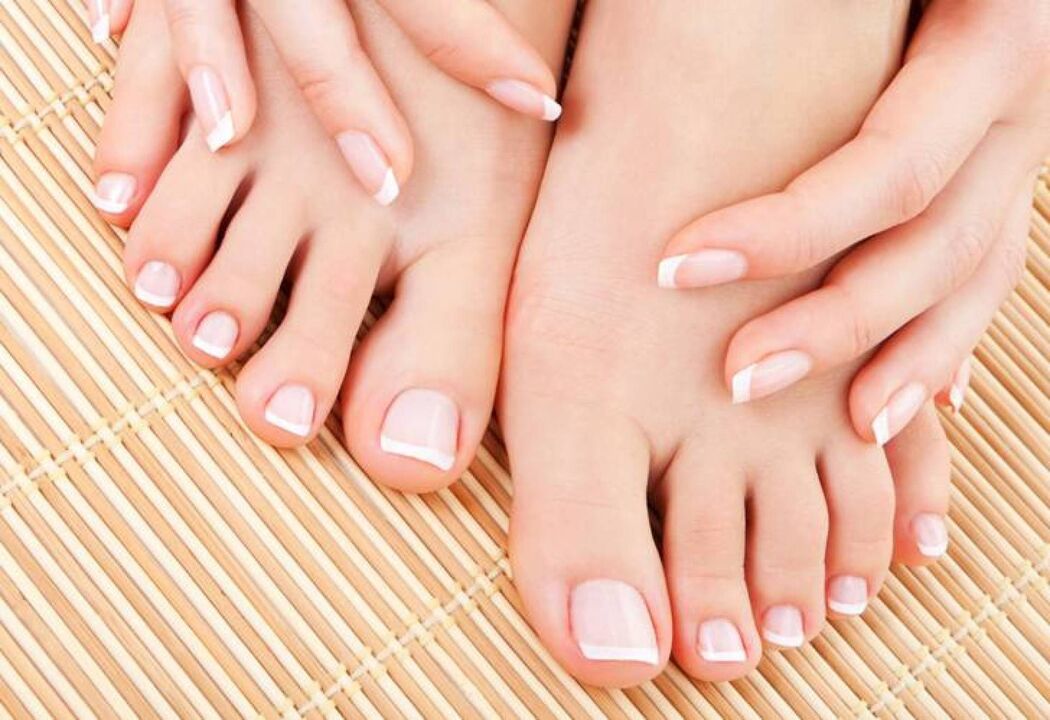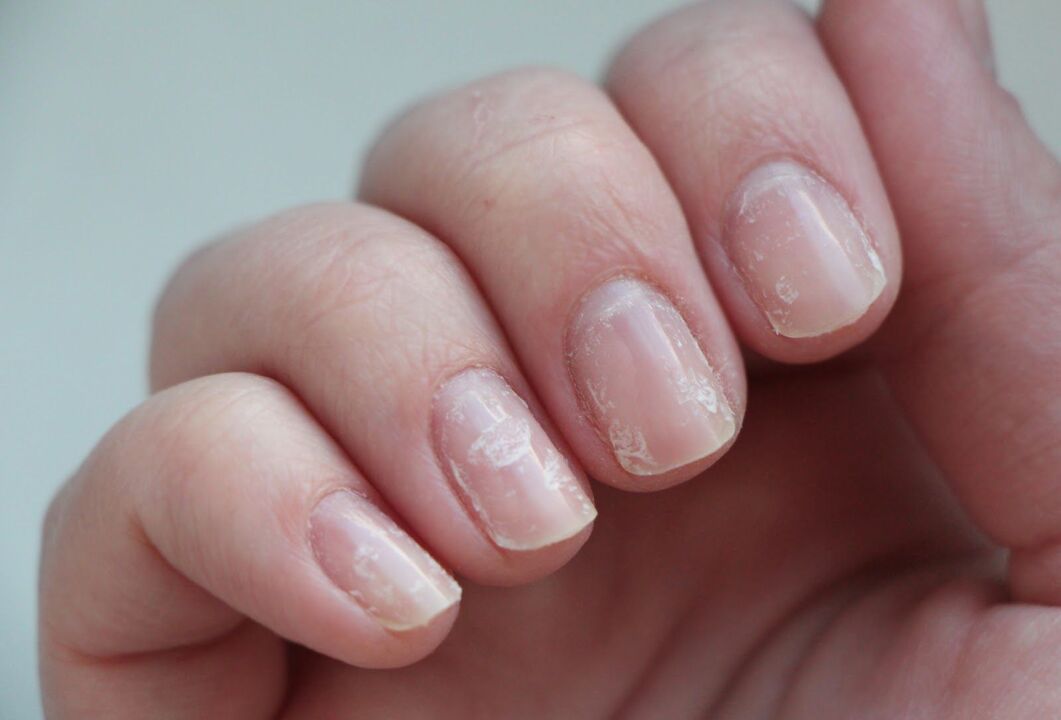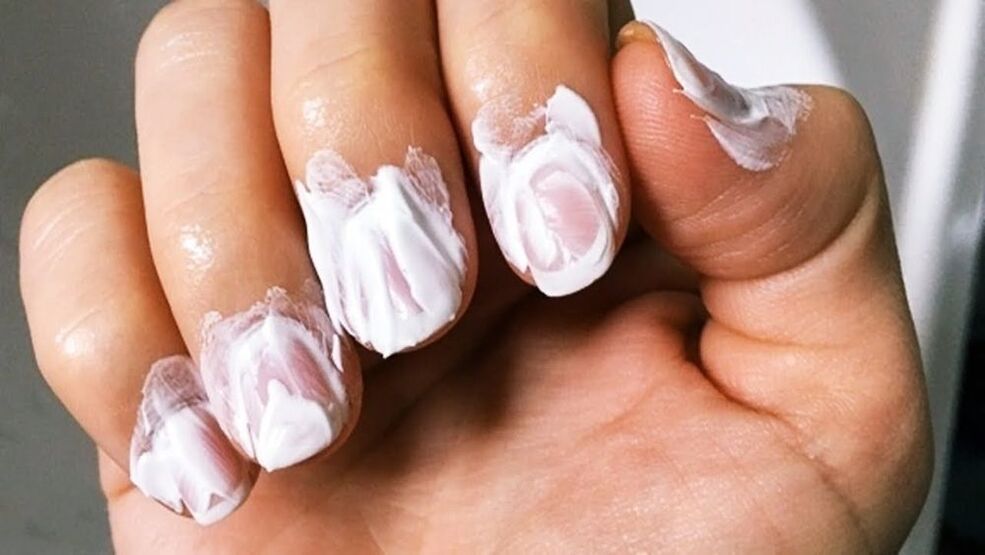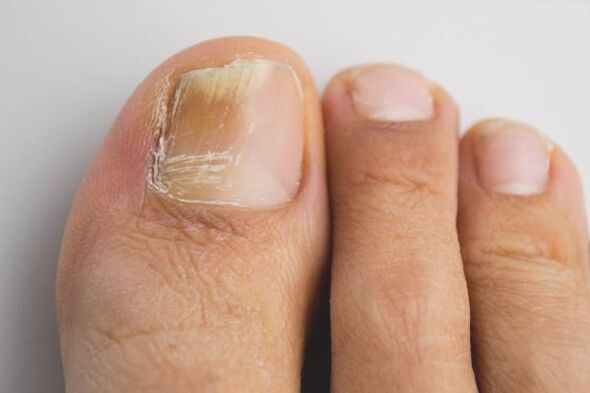Only a few years ago, fungal nail diseases were not given much importance, whereas now everyone understands the need for timely detection and treatment of massive infectious fungal infections caused by various dermatophyte fungi. Thanks to widespread public awareness, the number of visits to specialists with this pathology has increased, which in turn has led to an increase in the detection of foot mycoses. Since any deformation of the nail plate without an obvious reason (for example, injury) is mainly suspected of a fungal infection, self-diagnosis in this case is a decisive factor. Therefore, any change in the nail plate is a reason to contact a dermatologist, because at least half of such disorders will have a fungal etiology, and the rest will require careful diagnosis, again carried out by a specialist.
Factors that lead to fungus:
- In fact, fungal nail infection is a mild disease that does not lead to life-threatening conditions and does not cause pain or discomfort. More often it affects the elderly population, who often associate changes in appearance with the aging process.
- The sick themselves are often ashamed of the disease, are not prepared for the financial costs of treatment, or are convinced that it is incurable. Many people begin to self-medicate and do not see the disease as a reason to see a specialist.
- Since this disease mainly affects the feet, even during a medical examination or examination by a doctor, the matter usually does not come directly to the examination of the feet, without specific patient complaints about changes in the nails. This is facilitated by the very short time allocated to see patients even in specialized institutions, which, unfortunately, forces doctors to examine them only for the main reason for the visit.
Fungal infections on nails last quite a long timeTherefore, the earlier the disease is detected, the higher the chances of complete recovery. In addition, the earlier initiation of therapy allows us to limit ourselves to the use of only external preparations and nail cleaning, and this is only possible if the infection has affected a single nail from the distal or lateral edge less than 1/3-1 /2 of the plate. Topical external therapy is used to treat the early stages of fungal nail infection. Advanced forms of fungal infections require longer and more expensive treatment. Regular preventive examinations and medical examinations of the population play a special role in the early detection of nail mycoses.
Consequences
This seemingly harmless disease can cause very serious complications:
- damage to smooth skin and secondary infection;
- sensitization to fungi with the formation of allergic reactions and microbial eczema foci;
- complications of chronic dermatosis, varicose veins on the lower legs and leg lesions in diabetes mellitus, etc.
It is impossible not to mention the epidemiological importance of the existing focus of fungal infection: sick people will infect public places and other people, and in everyday life will be a source of transmission of fungal infections in the family.

Nail fungus (medically called onychomycosis) is a fairly common disease. According to doctors, it affects more than 15% of the world's population, although this pathology is diagnosed less often (in 2% of people). This contradiction is explained briefly: nail fungus does not threaten life, and if it worsens its quality, then in most cases it is very insignificant. Therefore, people do not always consult a doctor about onychomycosis, try to cope with the disease themselves or simply leave it without treatment.
Nail fungus develops quite slowly. Therefore, the first signs of fungal infection usually escape the attention of the patient. When the changes in the nails caused by the fungus become noticeable, it means that the process has gone far enough and it will not be easy to defeat the fungus.
Onychomycosis is often considered a cosmetic problem: nails affected by the fungus look unsightly. But it is necessary to fight the fungus not only to return the nails to their proper shape and shine. If the fungus is not treated, it will spread further. Usually the toenail is the first to be affected. If treatment is not started, the fungus spreads to the other toes, and since we cannot help but touch the feet with our hands, it is possible that the nails and nails will then become infected with the fungus. The fungus also spreads to the skin around the nail, causing irritation and itching.
Causes of onychomycosis
Onychomycosis can be caused by many different types of fungi. First of all, this is a dermatophyte. In second place are yeast fungi of the genus Candida, which are always present in small quantities on human skin (they most often affect the nails). Infection with mold fungi is also possible (they usually accompany other pathogens. Isolated infections with mold fungi are typical not for our climate, but for tropical climates).
The risk of fungal infection increases with age. In children, nail fungus is very rare, and, on the contrary, in older people it is detected quite often. Moreover, men suffer from onychomycosis more often than women.
The age specificity of the fungus is explained by the fact that our local immunity decreases over the years, while the natural defenses of the young body, as a rule, well suppress the activity of the fungus, preventing them from colonizing the nail plate. There is a dependence not only on local immunity, but also on general immunity. A weak general immune system is a good background for the development of any fungal infection.
For fungi of the genus Candida, it is enough that there is a problem with the immune system: they simply begin to multiply actively. Fungi of other species still need to enter our body from the external environment. Some types of fungi can be carried by animals. Mold is everywhere; they can reproduce without a host. However, in most cases, fungal infections spread from person to person.
Mushrooms love moist environments. Therefore, fungal infections often occur in places with high humidity. These are swimming pools, saunas, locker rooms, gyms. Wearing socks and shoes on wet feet can also be a trigger.
If there are cuts and cracks, it allows the infection to penetrate directly into the tissue, avoiding the need to invade the protective barrier that forms the surface of our skin.
The spread of fungus is facilitated by carelessness in personal hygiene: you should not use other people's slippers, soap, or towels. It is precisely because not every family follows this rule that nail fungus often becomes a family disease.
Damage to the nail usually starts at the edge. Dermatophytes penetrate under the free edge of the nail plate (into the subungual recess). In this case, the pathological process develops mainly in the nail bed. The second route of fungal penetration is from the nail folds. Candida fungus usually affects the posterior fold of the nail first (paronychia occurs), and then the nail itself suffers. One type of dermatophyte (T. mentagrophytes) can penetrate directly through the nail plate.
Symptoms of onychomycosis

The first signs of a fungal infection are nail loss of shine, cloudiness, and discoloration. In cases where the infection affects the skin around the nail, itching occurs. If treatment is not started, the fungus begins to destroy the nail plate: the surface of the nail becomes rough, the nail can peel, peel, break, collapse.
Specific manifestations depend on the pathogen, as well as the location, duration of the pathological process and its form. There are normotrophic, hypertrophic and atrophic forms of fungal infection.
It is characterized by the fact that the thickness of the nail plate remains unchanged. The disease manifests itself in the form of white or yellowish spots, which gradually increase in size. Finally, the overall color of the nail changes. The nail plate may peel off because the fusion of the nail with the subungual tissue is disrupted.
It is characterized by a significant increase in the thickness of the nail plate (due to the growth of the subungual epithelium). Nails become yellowish-brown or gray in color. The nail plate is usually actively collapsing. The nail is mainly damaged from the sides, resulting in a claw-like shape.
With this form of fungal infection, the nail becomes thinner and destroyed, starting from the outer edge. Destruction goes deeper, to the posterior nail fold; the nail bed is filled with a loose mass formed by particles of epithelial decay. Eventually, the nail may disappear completely.
Methods for diagnosing onychomycosis
Changes in nail color and fragility should be a reason to consult a dermatologist. You should not replace the doctor and diagnose yourself - you can make a mistake: changes in the nails may have different reasons.
The doctor makes a diagnosis based on a visual examination (a microscope can be used). To confirm the diagnosis, laboratory diagnostics are performed. It is also necessary to determine the type of pathogen (this will allow the most effective treatment to be prescribed).
At the appointment, the doctor will scrape the affected nail plate. If the pathological process affects only the free edge of the nail, then scraping of the subungual epithelium is also taken.
Microscopy is performed in the laboratory. A culture study is also carried out (the material is placed in a good environment and seen if fungal colonies appear). Culture studies make it possible to determine which fungus is causing the disease.
To accurately diagnose the disease, make an appointment with a specialist from the Family Doctor network.
Methods of treatment for onychomycosis

Treatment for nail fungus involves removing the affected part of the nail. Next, treatment is carried out using local antifungal agents (ointment, drops, spray, varnish). For significant lesions, the doctor may prescribe a general antifungal agent (tablet).
Since fungal activity increases in the context of immune problems, the proposed course of treatment may include measures aimed at improving overall immunity.
It is advisable to apply local products (ointment, cream, drops) to the exposed nail bed. Do not stop treating the affected area until the time prescribed by your doctor has expired. Before issuing the treatment, the doctor will most likely do another scraping so that laboratory tests can confirm the absence of fungus. Otherwise, there is a high risk of disease recurrence.
Do not self-medicate. Contact our specialist who will correctly diagnose and prescribe treatment.
Recipes with vinegar to treat nail fungus

Having discovered toenail fungus, only a small number decide to seek professional help. Others often ignore the problem until it reaches an advanced stage. Given the expensive drug treatment, more and more people choose folk remedies to eliminate the unpleasant manifestations of the disease.
Treating nail fungus with vinegar is the easiest home way to get rid of the unpleasant disease. A simple and affordable recipe, if used correctly, will help quickly cure a new infection. Vinegar and eggs provide important help in the complex therapy of onychomycosis, acting in addition to drugs. This product is also used for the prevention and rapid relief of unpleasant symptoms.
Reviews of folk remedies for toenail fungus using vinegar and egg essence are mostly positive. Many patients say that with the help of this medicine they can overcome this disease in just 2-3 weeks. However, this effect can be achieved only if the onychomycosis is in an undeveloped form.
Fungal causes and symptoms
Disease symptoms and pictures:
- changes in plate thickness - thickening or thinning;
- unpleasant smell;
- swelling, hyperemia, pain in the nail folds;
- the appearance of stripes or spots of different colors - white, yellow, black;
- delamination and destruction of plates, deformation.
In the final stage, the plate moves from the bed, becomes mobile, and severe pain is felt when moving. Defective plates make it difficult to wear shoes. For women, the problem increases due to the inability to wear open sandals, because their appearance suffers. Onychomycosis is usually accompanied by a skin infection, where the limbs itch, peels, and the skin peels. Vinegar essence, which can be found in any home, can be a real savior in the initial stages of treatment for nail fungus.
The causative agent of onychomycosis is opportunistic; they are always near humans. What factors contribute to the development of the disease:
- decreased immunity;
- constant contact with the sick person and his belongings;
- wearing and using other people's clothes and hygiene products - wipes, slippers, manicure and pedicure accessories;
- ignoring hygiene rules;
- increased sweating of the feet;
- visit a beauty salon with weak antiseptics.
It is susceptible to onychomycosis. It will take a long time to cure nail fungus with vinegar, as well as any antifungal agent. Often, the infection is detected when the pathogen has penetrated deep into the nail plate and its destruction is obvious.

How does vinegar affect the source of disease?
The positive effect that comes from treating nail fungus with acetic acid is created by its effect on pathogenic microorganisms. An acidic environment is harmful to dermatophytes.
With prolonged contact with acid, the fungus stops multiplying and dies.
Ointment for treatment
An ointment that can cure fungus quickly and effectively can be prepared according to the following recipe:
- Take glycerin and any 7% or 9% vinegar and mix it all. The quantity of components must be used in such a way that it is necessary to form a paste consistency. After this, the finished mixture is used on the feet about 2 times a day.
- You need to take 1 egg and dip it into 70% vinegar essence. After waiting for the shell to dissolve, you need to remove the film and mix the white and yolk with 200 g of butter. Before using the ointment, it is recommended to steam your feet well. It should be kept for up to 8 hours, so it is better to use the product at night.
You can make an ointment to treat nail fungus at home using one of the following recipes:
- Take glycerin, olive oil and dimethyl phthalate in equal parts. Stir and add a double portion of 70% vinegar essence to the resulting mixture and mix again. Apply to the nails and leave for 10 hours, and then wash using soap and water;
- take 40 g of eucalyptus essential oil, 1 tablespoon of 9% vinegar and 15 g of honey, mix everything and put it in the refrigerator for 3 days. After this, the finished ointment must be applied to the affected nail plate once a day.
You can use vinegar against toenail fungus through cauterization. The main advantage of this method is that it requires minimal time, and its efficiency is comparable to other methods.
How to prepare the mixture? Traditionally, vinegar and iodine are mixed in equal parts and used on all toenail plates. The amount of product used depends on the size of your plate. Usually use no more than 2-4 drops. Next, you need to wait until the solution is absorbed and you can get dressed or, for example, sleep. This procedure is done no more than 1-2 times a day.
What Causes Fungal Infections?
fungusspread from the legs (known as"dermatophyte fungus"), causes most fungal nail infections. Less commonly, nail infections are caused by other types of fungus, usually yeast (eg.Candida) Andmould.
This fungus tends to attack damaged nails, because it is easier for the fungus to penetrate. Fungal infections of toenails are very common (1 in 4 people may be affected at one time), while toenail fungus is less common. Both types are most common in older adults, people with weakened immune systems, and people with diabetes and poor peripheral circulation. A warm, moist environment helps fungi grow and cause infection. Wearing tight shoes or using the shower, bathroom or locker room can increase the risk of yeast infection.
Are they hereditary?
Absolutely not. However, in some very rare cases, there are genetic risk factors and other family members may also be affected.
What are the signs of a fungal nail infection?
At first there are usually no symptoms. Later, the nail may thicken and become painful when pressure is applied to the inside of the shoe. They are then difficult to prune. Seeing infected nails, especially toenails, can be embarrassing. Affected nails can damage socks and tights and can also rub against adjacent skin. Nearby skin may also have a fungal infection; it may itch, crack, blister, or appear whitish, especially between the toes.
What does a fungal nail infection look like?
Nail fungus infectionusually starts from its free edge and then spreads along the side of the nail to the base of the cuticle. Eventually the entire nail may be affected. The infected area becomes white or yellowish and becomes thickened and scaly. Less commonly, there may be white inclusions on the nail surface. The nails most susceptible to damage from fungal infections are the big toe and little toe. Sometimes, especially for those who often do wet work, such as housewives or cleaners, the skin around the nails becomes red and swollen. This is called paronychia and can allow infection to easily enter the nail.
How is a fungal nail infection diagnosed?
Fungal nail infectionusually diagnosed clinically. Your doctor may take a piece from the infected nail and send it to a lab to see if the fungus can be seen under a microscope or grown in culture. Sometimes a repeat sample may be required.
Many nail problems may just look likefungal infection, - for example, the changes observed in psoriasis, after a bacterial infection or an old injury, but antifungal tablets will not help. Proper treatment may depend on knowing which fungus is causing the problem; It may take several weeks to see results.
Can a fungal nail infection be cured?
yes. However, to succeedtreat fungal nail infectionsLong-term treatment is required, which can take up to a year. Fingernails are easier to treat.Fungal nail infectionusually recurring, especially in the toes.
How can a fungal nail infection be treated?
Fungal nail infectionare not bothersome in themselves, not all of them require treatment. Some people with infected toenails are not worried about them at all. In this case, they can sometimes be left alone (although the patient must still be careful and try not to spread the infection to other parts of the body and nails, or to other people).
On the other hand, ifinfected nailscause embarrassment or inconvenience, they are usually treated. It is important to treat people whose infections can cause serious health problems, such as diabetes or a weakened immune system, to prevent potentially serious health problems.
The goal of treatment is to eliminate the fungus: then the nail usually returns to normal. However, if the nail is damaged before it becomes infected, it will be more difficult to clean and may return to its previous state.Nail infectioncaused by mold and yeast can be very resistant to treatment.
Treatment options include:
Treatment applied to the nail (local treatment)
Treatments applied to the nails do not work as well as treatments given orally. They are most effective if the infection is at an early stage. The most commonly used methods are nail polish remover amorolfine, ciclopirox and tioconazole solution.
They may not be able to clean the inside of the infected nail on their own, but regularly removing the damaged part of the nail using nail clippers or sanding can help. Oral medications used in combination with antifungal agents increase the likelihood of recovery. They may need to be used for 4-12 months before effects are noticed.
Fornail infectionthe course of treatment is shorter. The cure rate with local treatment alone is about 15-30%. Local treatment is safe. Redness and irritation may occur.
Before you start taking the pill, your doctor must send part of the nail to the laboratory to check if the diagnosis of fungal infection is confirmed.
Laser and photodynamic therapy may help but are less effective than the topical and systemic treatments listed above.
Plant-based products are also promoted fortreat fungal nail infections, but there is no convincing evidence that it is safer or more effective than standard treatments.
Surgical nail removal
Sometimes very thick nails that do not respond to pills alone can be removed by a surgeon under local anesthesia, but this is rarely done because the extent of the results does not justify surgery.
Personal care
- Keep nails short, dry and clean. Use one clipper for infected nails and another for normal nails.
- Don't just treat your nails; Use an antifungal cream to treat the skin on your feet.
- Avoid cutting the cuticles, either yourself or by a nail technician, as this increases the risk of nail damage and infection.
For fungal infections of the toes:
- Wear comfortable shoes without high heels or tight socks.
- Keep your feet dry, wear cotton socks and change them daily, and use breathable shoes. Regular washing in hot water will clean most soiled socks, but it can be made more effective by using an antifungal spray before washing. Other clothing should generally not be contaminated.
- Maintain good foot hygiene, including treating any infections.
- Wear clean bathing shoes when using shared showers.
- Be especially careful about the hygiene of the affected feet.
- Consider getting help from a podiatrist if thickened toenails cause discomfort when walking.
conclusion
Vinegar and eggs against nail fungus give positive results when used daily. If no effect is observed during treatment, it is necessary to consult a doctor and start drug therapy. In this case, you can continue to use folk remedies - they will only speed up the healing process.
Keep in mind that treatment for onychomycosis will always take a long time. To achieve full recovery, it may take several months to a year with normal treatment procedures.
















